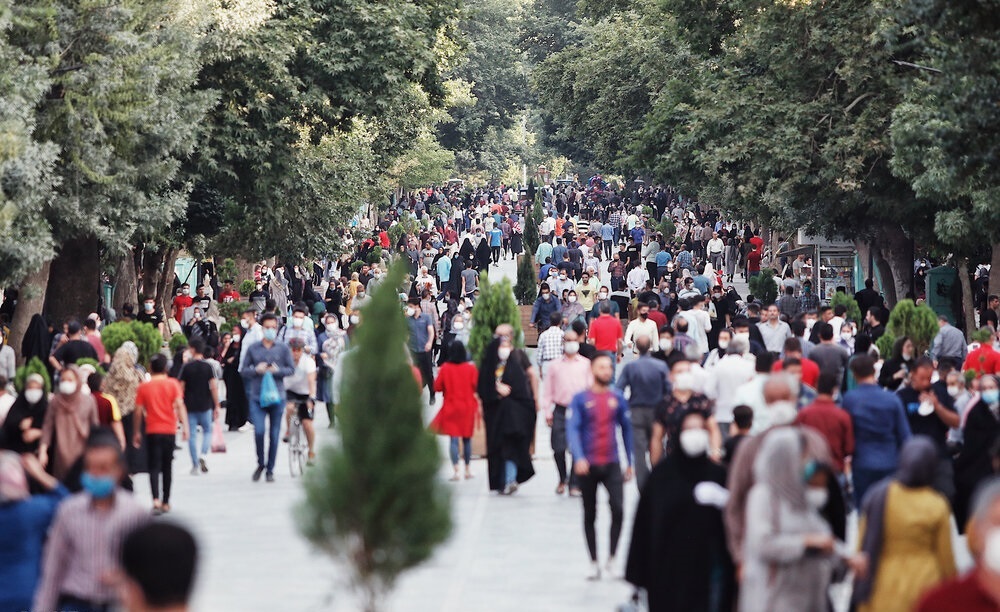TEHRAN: Iran’s once youthful population is rapidly aging, raising economic concerns as cash-strapped couples protest the government’s push to have more children.
Driven by increased life expectancy and a dramatic decline in birth rates, Iran’s demographic structure has changed over the years, mirroring trends around the world.
Read more: UN: Iran executed more than 900 people in 2024, including dozens of women
The National Institute of Population Research has found that the country’s population of 86 million is aging five times faster than it is growing, according to the official news agency IRNA. IRNA and the United Nations predict that by 2050, one-third of Iranians will be aged 60 or older – a threefold increase from 2021.
“With this ongoing trend, the country will face a serious crisis in the future,” Interior Minister Eskandar Momeni warned in December.
He said Iran’s population could more than halve its size over the next 75 years.
Authorities have launched public campaigns to encourage Iranians to have more children, with eye-catching billboards and posters periodically displayed across the country.
“Children, the heartbeat of our lives!” read a poster showing a couple with four children.
A billboard featuring a happy family was captioned: “Life is better when happy – having children is better when you have many.”
Shaho Sabbar of Tehran University said the “negative impact” of Iran’s changing demographics “has begun to be felt over the past decade.”
The long-term impact could be “significant,” Sabbar said.
“As the number of working-age people declines, Iran may face labor shortages, reduced economic growth and an increased burden on the younger generation to support the elderly.”
‘Huge job’
During the Iran-Iraq war in the 1980s, the Islamic republic experienced a birth boom, partly due to a successful government campaign to encourage more births.
But as the country struggled to rebuild its economy after the war, the government reversed policy, urging Iranian families to have no more than two children.
The birth rate has since dropped sharply, from an average of 6.4 children per woman to just 1.6 in 2023, said head of the National Population Research Institute Mohammad Javad Mahmoudi.
Population growth has also slowed from 1.29% in 2011 to just 0.6% in 2023, Mahmoudi said.
Supreme Leader Ayatollah Ali Khamenei, who initially supported postwar family planning policies, later called them a “mistake.”
In August, he requested measures to reverse the decline in the birth rate.
“The country needs a young population, and if it has to suffer the bitter consequences of population aging, there will be no cure,” Mr. Khamenei said.
Struggling under the weight of international sanctions, high unemployment and soaring prices, many Iranians are discouraged from having children.
“Raising a child is a huge undertaking,” said Zohreh, a 39-year-old makeup artist from Tehran who has been married for seven years.
Giving only her first name, she said her experience growing up in the capital was marred by a “poor education system” and the “dire” state of the post-war economy.
The burden is “overload”
Sabbar said that in addition to economic concerns, Iran’s aging population could also portend an “overwhelming” burden on the country’s health care system.
“There will also be a possibility of a pension and social security crisis,” he said.
“With fewer people of working age, the government may have difficulty accommodating the growing number of retirees.”
Authorities have gone to great lengths to encourage young Iranians to start families, offering incentives to parents such as low-interest home loans, financial support and free health care for parents. mothers and children.
But the overall impact of the administration’s push “has been limited,” Sabbar said.
A 38-year-old civil servant who only gave his last name as Etemadi for fear of repercussions, said the incentives were “too hard to get or very small compared to the cost of raising a child.”
He has three children, all of whom were born before the financial incentives were introduced in 2021, and therefore cannot benefit from them.
Other government measures enacted that same year included the launch of a dating app aimed at building “long-term” relationships.
Authorities in 2021 also limited the distribution of contraceptives and imposed strict limits on pregnancy screening to detect genetic diseases.
Zohreh, a makeup artist, said restrictions on pregnancy testing frustrate her because she fears that without them, “my baby will be born with defects.”
Read more: Italian journalist Sala has been released from an Iranian prison, the Italian Prime Minister’s office said
Sabbar said the solution lies beyond family planning.
The government should “create a more favorable environment for saving, investing and immigration to make sense,” he said.
